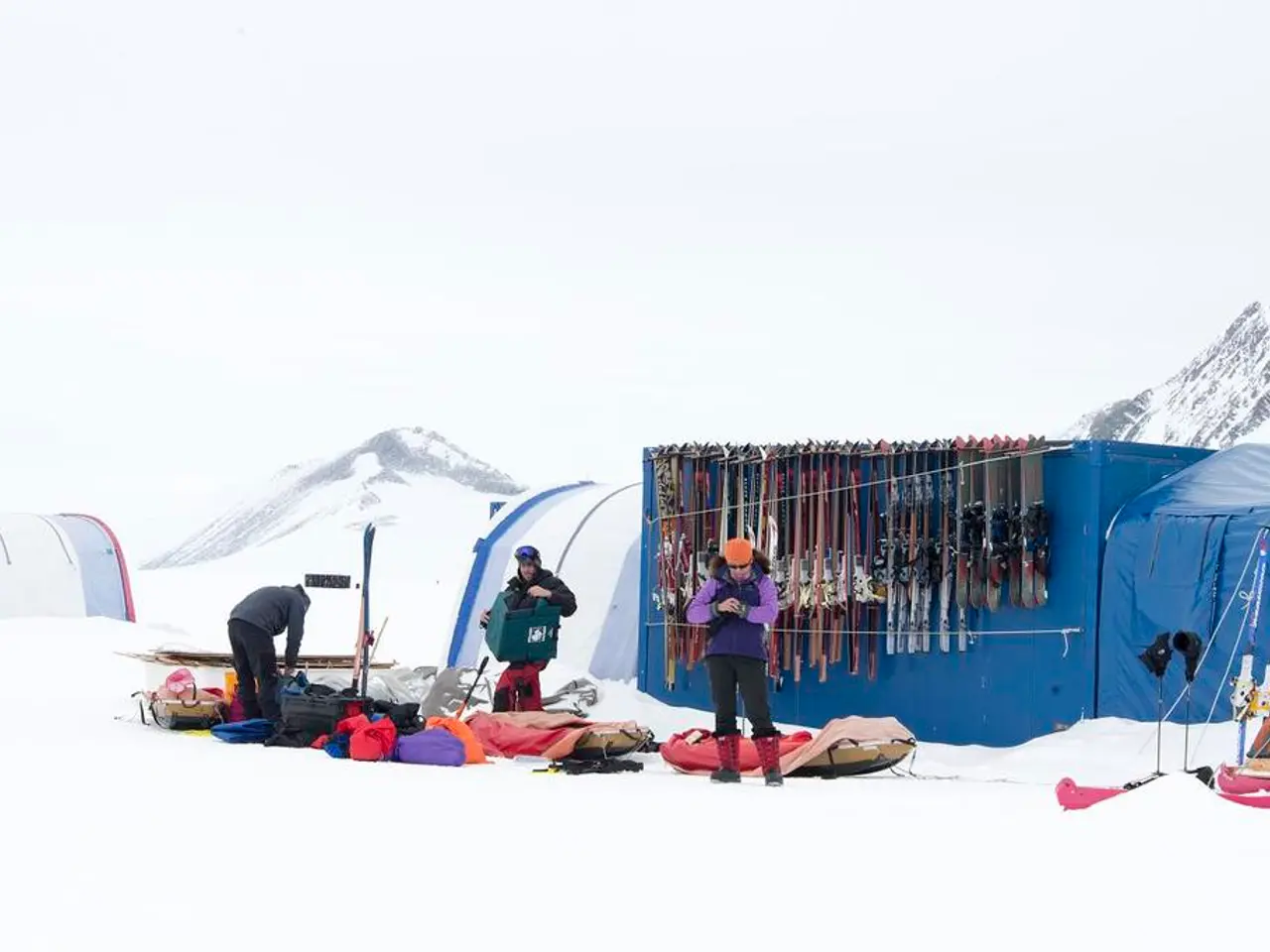List of Alaska's National Parks:
Alaska, the Last Frontier, is home to eight breathtaking national parks that showcase the state's untouched beauty and diverse ecosystems. Each park offers a unique experience, preserving the vast wilderness that characterises Alaska.
1. Denali National Park Located in central Alaska, near Mount McKinley, Denali National Park was established in 1917. The park protects the tallest peak in North America, Denali (formerly Mount McKinley). Known for its wildlife and alpine scenery, Denali is a must-visit for nature enthusiasts[1][3].
2. Kenai Fjords National Park Established in 1980, Kenai Fjords National Park is famous for its stunning fjords carved by glaciers and rich marine wildlife. The park offers opportunities for hiking and glacier cruises, making it an ideal destination for both land and sea lovers[1][3].
3. Gates of the Arctic National Park and Preserve Located in the Brooks Range, northern Alaska, Gates of the Arctic National Park and Preserve is the northernmost national park in the U.S. It protects vast Arctic wilderness, including rugged mountains, tundra, and rivers. Due to its remote location, it offers a unique wilderness experience[1].
4. Wrangell–St. Elias National Park and Preserve The largest national park in the U.S., Wrangell–St. Elias National Park and Preserve, is located in southeastern Alaska near the Canadian border. It protects extensive glaciers, mountains, and historic mining sites. It is part of a larger UNESCO World Heritage Site with contiguous parks in Canada[1].
5. Bering Land Bridge National Preserve Established in 1978, Bering Land Bridge National Preserve protects remnants of the land bridge that once connected Asia and North America during the Ice Age. It highlights cultural history and Arctic tundra ecosystems[1].
6. Kobuk Valley National Park Kobuk Valley National Park, established in 1980, is known for its massive sand dunes and caribou migration routes. It preserves a unique arctic desert ecosystem and cultural heritage of Native peoples[1].
7. Lake Clark National Park and Preserve Established in 1980, Lake Clark National Park and Preserve features volcanoes, glaciers, and salmon-rich rivers. It is a prime location for viewing brown bears and protecting traditional subsistence lands[1].
8. Katmai National Park and Preserve Famous for the Valley of Ten Thousand Smokes volcanic ash flow and abundant brown bears that feed on salmon, Katmai National Park and Preserve, established in 1980, combines dramatic volcanic landscapes with rich wildlife habitats[1].
These parks collectively showcase Alaska's vast wilderness, from towering peaks and active volcanoes to Arctic tundra and coastal fjords. Travelers can experience untamed beauty, wildlife viewing, and cultural history across these iconic national parks.
Denali and Kenai Fjords are among the most visited parks, with Denali offering breathtaking mountain vistas and Kenai Fjords known for glaciers and marine wildlife cruises. The more remote parks like Gates of the Arctic provide unparalleled solitude and wilderness adventure[1][3].
References: [1] National Park Service. (n.d.). Alaska National Parks. Retrieved March 21, 2023, from https://www.nps.gov/alaska/index.htm [3] National Geographic. (2021, February 23). Alaska's National Parks. Retrieved March 21, 2023, from https://www.nationalgeographic.com/travel/destinations/north-america/united-states/alaska/alaskas-national-parks/
- Travellers planning their trip to these national parks should check the weather forecast beforehand and pack appropriate clothing, including layers for cold temperatures and waterproof gear for potential rain or snow [1][3].
- The pristine landscapes and abundant wildlife make the national parks of Alaska an ideal location for a lifestyle that emphasizes adventure and connection with nature. Exploring the parks by map offers an unforgettable journey, with each park presenting a unique aspect of Alaska's natural beauty and ecosystem [1][3].
- A guide can enhance a visitor's experience in the parks, helping navigate tourist attractions and providing a deeper understanding of the region's natural history and cultural heritage [1].
- The river systems in these national parks, such as the Nenana River in Denali, the Seward Highway in Kenai Fjords, or the Kobuk River in Kobuk Valley, provide opportunities for impressive scenic drives and fishing expeditions [3].
- Lakes within the parks, like the Donahoo Lake in Lake Clark and the Walker Lake in Wrangell–St. Elias, offer stunning scenery and are frequented by various wildlife species, such as moose, bears, and birds [3].
- Each park serves as a sanctuary for numerous bird species, including bald eagles, peregrine falcons, and various waterfowl that can be spotted amidst the Alaska wilderness [1].
- The ecosystems in these national parks are essential habitats for a diverse range of wildlife, including caribou, brown bears, wolves, and moose. Visitors may have the opportunity to witness these animals in their natural surroundings [1].
- The national parks of Alaska offer travelers an opportunity to reconnect with nature and understand the delicate balance between man and the environment. Embracing the natural Alaskan lifestyle amidst breathtaking landscapes and diverse wildlife will leave a lasting impact on any traveler [1][3].




